
Deep-pit beef barbecuing isn't feasible for several reasons, but you can replicate it with a large-capacity roaster oven. Deep-pit barbecuing means taking a large hunk of beef, such as a chuck roll or rib roast, and burying it in a hole lined with coals. This worked well on the prairies of the 19th century, where space wasn't a concern, but burying part of a cow for a few days in the backyard doesn't go over well in the 21st century. With a large roaster oven, though, you can roast beef -- and not your lawn -- in a few hours.
Step 1
Set the beef in a dish or tray lined with several paper towels 24 hours before you want to roast it, and season it liberally with kosher salt. You need about a 1/4-inch-thick layer of salt to start the breakdown of connective tissue. If you have a salt-free spice rub, mix it with the salt and apply it. Don't add salt if the rub already contains it.
Step 2
Let the beef sit in the refrigerator uncovered for about 24 hours. It takes about 24 hours for the sodium to penetrate deeply enough to season the beef beyond the surface and make its way a few inches inward.
Step 3
Take the beef out of the refrigerator and let it come up to room temperature just before you roast it. The amount of time it needs to warm up depends on its weight, but allow 30 to 45 minutes for every 5 pounds, not exceeding 2 hours.
Step 4
Set the roaster oven to 450 degrees Fahrenheit about 20 minutes before you start, and let it heat up.
Step 5
Scrape off the salt from the beef and coat it with a thin layer of oil or butter. Fat helps the beef brown. Season the beef with herbs and spices, if desired.
Step 6
Place the beef in the roaster oven and cover it with the lid. Sear the beef until golden brown, about 10 to 15 minutes, then turn it over and sear the other side.
Step 7
Insert an oven-safe meat thermometer in the center of the roast. If you're roasting a tender beef cut, such as a rib roast or strip roast, lower the temperature to 350 F. If you're roasting a tougher beef cut, such as chuck or rump, lower the temperature to 225 F.
Step 8
Roast rib roasts and strip roasts for about 13 to 18 minutes per pound, or until they reach 20 degrees below the desired internal temperature, and remove the juices from the roaster oven. If you want medium-rare beef, or a final temperature of 130 F, remove the juices when it reaches 110 F; if you want medium or medium-well, or an internal temperature of 140 F, remove the juices when the beef reaches 120 F. If you're roasting a cut from the chuck or rump, roast it until tender, or about 45 minutes to 1 hour per pound, then remove it and serve.
Step 9
Turn the heat up to 400 F after you remove the juices. Cook the beef until it reaches 125 F for medium-rare and until it reaches 135 F for medium.
Step 10
Take the beef out of the roaster and let it rest on a tray for 15 minutes per pound, but not exceeding 45 minutes, so the moisture can redistribute throughout. Serve the beef immediately. Store leftovers in an airtight container up to 2 days in the refrigerator and reheat them to 165 F before serving.
Related Articles
Cooking Guide for Semi-Boneless Beef ...

How to Cook a Beef Topside Roast

How to Cook Prime Rib With a Kosher ...

How to Convection Roast a Brisket

How to Blanch Beef

How to Cook a 15-Pound Rib Roast

How to Pan-Fry a Petite Sirloin

How to Cook an Elk Shoulder

How to Cook Angus Beef in the Oven
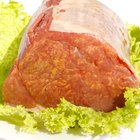
How to Smoke Corned Beef
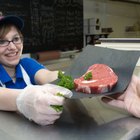
How to Cook Rump Steak
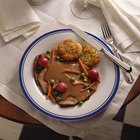
How to Use an Electric Roaster to Slow ...

How to Cook Boneless Beef Chuck Medium ...
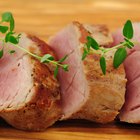
How to Cook Beef Tenderloin With the ...

How to Cook a Sirloin Like a Prime Rib
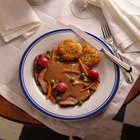
How to Prepare Chuck Tender Roast

How to Cook the Perfect Ribeye Using a ...
How to Cook a Lamb Square Cut Shoulder
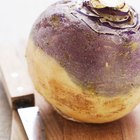
How do I Cook Turnips in a Pot Roast?
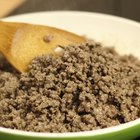
How to Cook Beef Mince
References
Warnings
- The USDA recommends cooking beef to a minimum temperature of 145 F for safety reasons; cook to a lower temperature with caution. Children, the elderly and those with compromised immune systems should avoid eating undercooked meat.
Writer Bio
A.J. Andrews' work has appeared in Food and Wine, Fricote and "BBC Good Food." He lives in Europe where he bakes with wild yeast, milks goats for cheese and prepares for the Court of Master Sommeliers level II exam. Andrews received formal training at Le Cordon Bleu.
Photo Credits
Eising/Photodisc/Getty Images